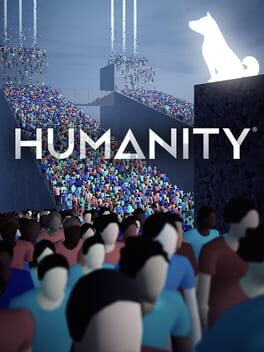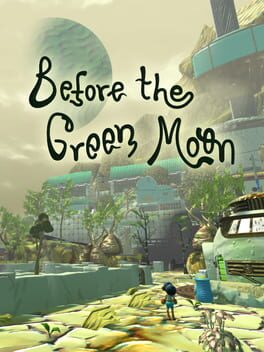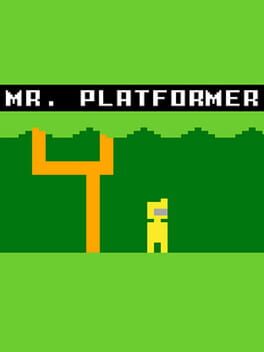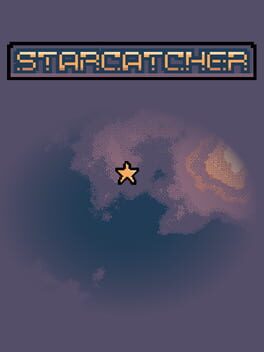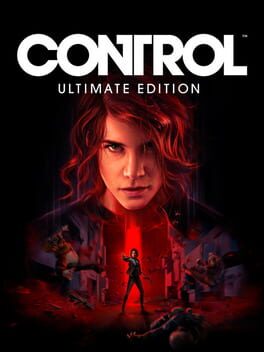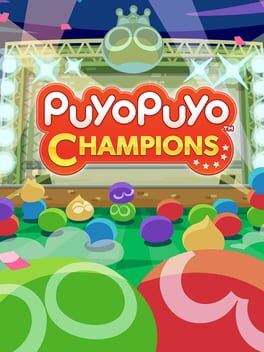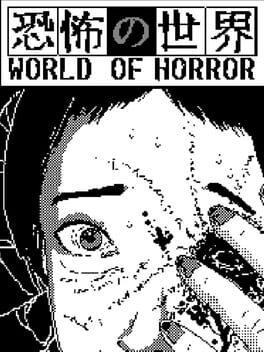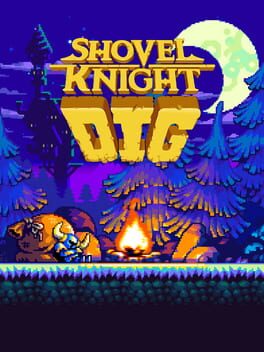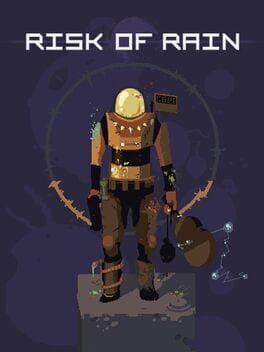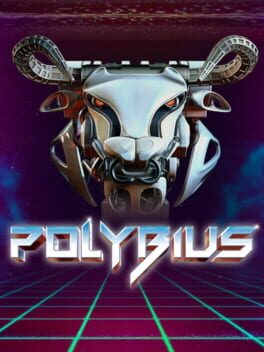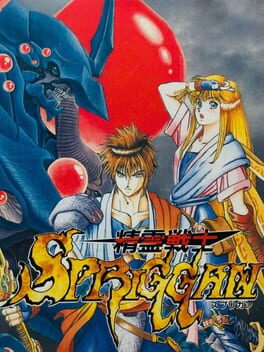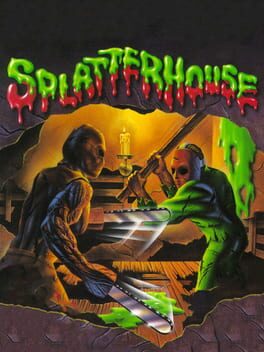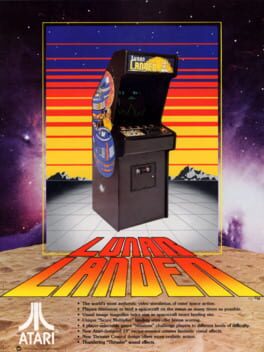done
2023
It's possible to look at a level of Humanity for ages. The visual concept of bipedal figures swarming or moving like schools of fish remains striking throughout the game's transformations. The soundtrack is also pleasantly abstract, which works well at both regular speed and fast-forward. That's a good thing, as the major downside to the game can be how much it relies on trial-and-error and restarts. However, the variety of levels and challenges ensures that issue doesn't dominate the game. Some levels are genuine brain-twisters and the boss fights (yep, it's a puzzle game with boss fights!) are always a spectacle.
Before the Green Moon is a beautiful game. Relationships unfold slowly and gently, but the pace of the game around the busywork of farming and gathering provides structure. For a large chunk of the game's time (which, for me, lasted about 9 or 10 hours), it seemed like there was at least one new encounter or discovery each day. The ending also provided me with a feeling of nervous excitement that I get before a big trip. Few games are this emotionally engaging.
2023
Intriguing throughout. It begins as Cavanagh's experiment making a platformer with Godot. It's almost like flipping through a sketchbook of what he considers to be the basic elements of platformers, with graphics from an earlier era to match. Collisions and obstacles are fair, although water levels caused more and more trouble as I closed in on finishing every level. Levels became more complex as I went, as did my thoughts on what Cavanagh was conveying through the syntax of platform games.
2018
After a bit under 60 escape attempts, with 10 successful, I rolled credits satisfied. I had plenty of fun along the way, particularly with how the game develops through dialog run after run. The cast is entertaining, particularly when they interact or comment on one another, and the action drew me in most of the time.
While there are a lot of options for players to customize Zag and set conditions for runs, I would have liked for there to be more variety in the Underworld. Rooms became a bit too recognizable at the end. Even with Extreme Measures, so did the boss fights. But I was still discovering new combinations of weapons and boons in my latest run and having a good time. The combination of visual novel and roguelite with Supergiant's flair for production still stands out, though.
While there are a lot of options for players to customize Zag and set conditions for runs, I would have liked for there to be more variety in the Underworld. Rooms became a bit too recognizable at the end. Even with Extreme Measures, so did the boss fights. But I was still discovering new combinations of weapons and boons in my latest run and having a good time. The combination of visual novel and roguelite with Supergiant's flair for production still stands out, though.
2022
Good for a quick hit of puzzle-platforming. The puzzles in that designation are better than the platforming, in that I kind of wish this hadn't been restricted to a game that would fit in a one-button jam. I enjoyed the use of gravity and the resulting emphasis on spacing and directionality. But I would have enjoyed it more without fighting the controls that require a jump and stomp in order to change direction. Having such a heavy mechanic doesn't quite jive with the puzzle design and led to a few retries that felt unnecessary.
With that said, I also enjoyed the available variety in star types, obstacles, and even the color palette. I plan to check out more from Escada soon.
With that said, I also enjoyed the available variety in star types, obstacles, and even the color palette. I plan to check out more from Escada soon.
I started replaying this when I first got a PS5. It was a lights-out difference from my first play on PS4. Turns out that not having to wait for things like the start screen to load has a big impact. I also had a much easier time navigating the Oldest House this go around and rushing launch powers to maximum made it an easy trip. I wound up completing every side mission, since that's where a lot of the flavor is. And in 2023, the sequence of Finnish Tango > Ashtray Maze is still just about as good as it gets in action/adventure games.
2023
It's still a good ride. This remake is glossier, lengthier, and controls more fluidly than the original. I'm not sure that all adds up to a better game, as I think it loses a bit of its arcade-shooter feel. This version feels less idiosyncratic for good and bad. Some boss fights are definite improvements (especially Krauser) and so are some areas (the semi-open space around the lake and the island). Is this essential? No, but it is a lot of fun to get in and get blasting.
2018
2020
There's more to World of Horror than I thought at first glance. That is, more options and depth in what can be done in different locations, events, and cases. Koźmiński and the rest of the small team around this one accomplished a lot with a little. The interface is still clunky and cluttered, but it works well enough within the game's structural pillars of dungeon crawling and random generation. Speaking of, the text and themes of the game are a better fit for those structures than usual. Strange and threatening happenings can happen at any moment, but what else should be expected when an eldritch force attempts to break through into our world?
2022
Unfortunately, playing this one made me think of better games that I would rather be playing. Well, one is a set of games: the Treasure Trove games. I could be playing any one of those and doing a challenge run in which I destroy every checkpoint. That would have the same effect of resetting my progress with each death, but I would benefit from well-crafted levels and more precise controls. Similarly, I think there's some clear inspiration from Downwell in here, but without the momentum and deceptive simplicity. Those are good ingredients, but they don't come together in Shovel Knight Dig. Ultimately, I don't think that procedural generation and Shovel Knight go all that well together.
2013
I had a circuitous route to Risk of Rain as I've already played (but haven't yet finished) its sequel. With a winning run in this one, I'm curious to see if I'll have more luck with the second. But I do think that the first Hopoo effort still has some great things going for it in its own right. It's a very readable game despite its chaos and scale. Classes are varied and stacking items and drones is a blast. The soundtrack is worth an extra star in its own right, too. Most importantly, it feels like the designers trust the player to have fun with the game in their own way. There's a lot of control in when to start the fireworks, fight bosses, and progress, right up until the final boss.
2017
An outstanding expression of Llamasoft's ideas. A game of high-velocity puzzles, signs, geometry, and psychedelia that often turns into vibes-based navigation and tests of nerve. The game's speed, depth, and effects are intense in VR while still being readable flat. A few levels towards the end buckle under their own weight in that their mechanics don't quite mesh with how the game is otherwise played, but the finale makes up for it. Level 50, that very last one, is a glorious send-off.
Blown away by this one being from 1991. It must have been from the future. Really, it's Compile building on the platform of their previous work. Spriggan has a great implementation of the Aleste system of collecting multiple power-ups but these ones can be combined to change the shape and pattern of your shot. Even better, each of the three that you can hold at a time can be ejected in a pinch as a small bomb. Sprites are great, there are fully voiced cutscenes (that my lacking Japanese was not up to, that's on me), and designs are detailed. There could be a little more to some enemies and patterns, but there's more than enough variety for its six-levels-plus-a-final-boss.
1988
While some of the sprites are great and there's a few fun ideas in Splatterhouse, it's kind of a letdown to play. Sure, it looks better than some other games from the late 80s, but its levels are monotonous in comparison to other beat-em-ups and platformers of the time. Some bosses like the Poltergeist are creative in concept, but most of them outstay their welcome. It succeeds as horror pastiche, but that's about it.
1979
Holds up very well. As with a lot of the Atari arcade games from the 70s, the most impressive thing about it is the feeling of momentum. I think there's still an element of psychological mystery as to how the feeling of gravity is communicated so well with so little. There is something charming about the simplicity of the vector graphics and they're complimented with numerical readouts for speed and direction. There's also the snark and satisfaction of the text messages that display after landings, both successful and attempted. It's very satisfying to nudge the lander into a 5x score multiplying landing spot and see "The Eagle Has Landed."
